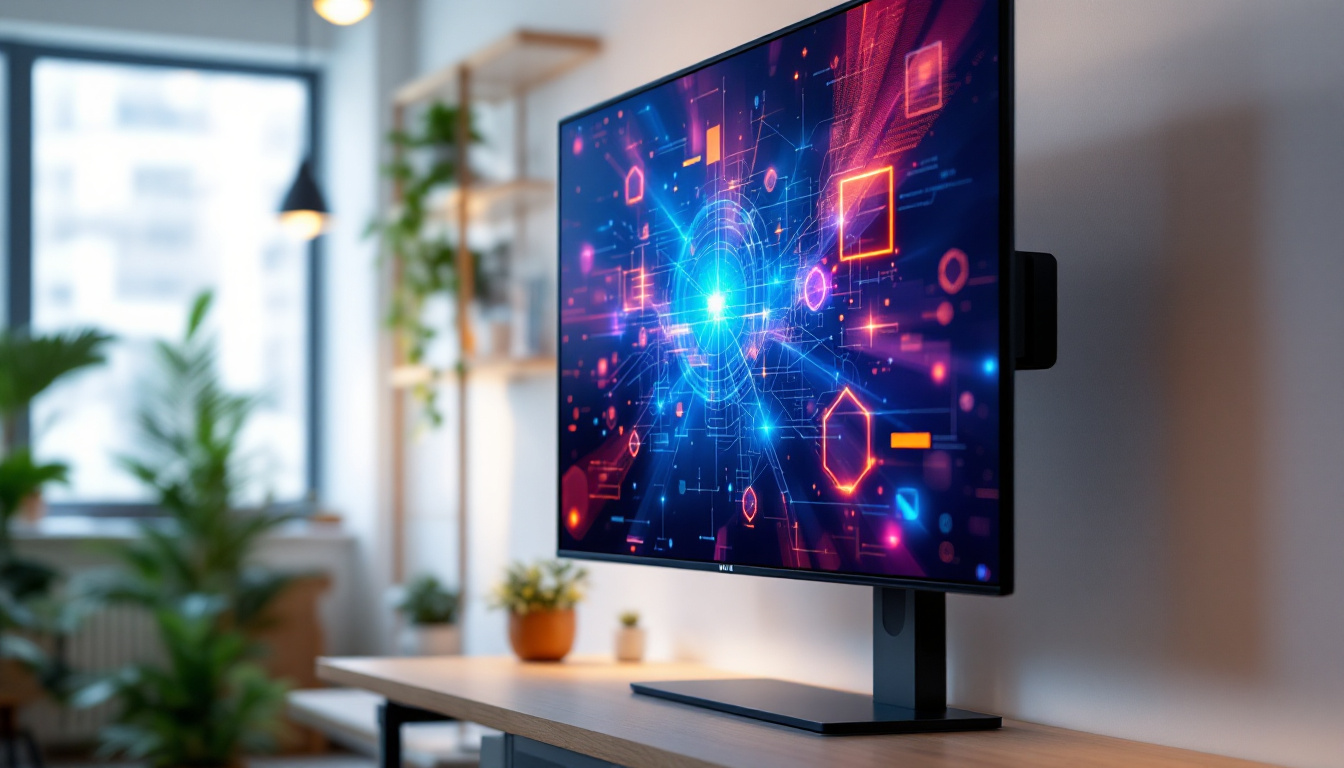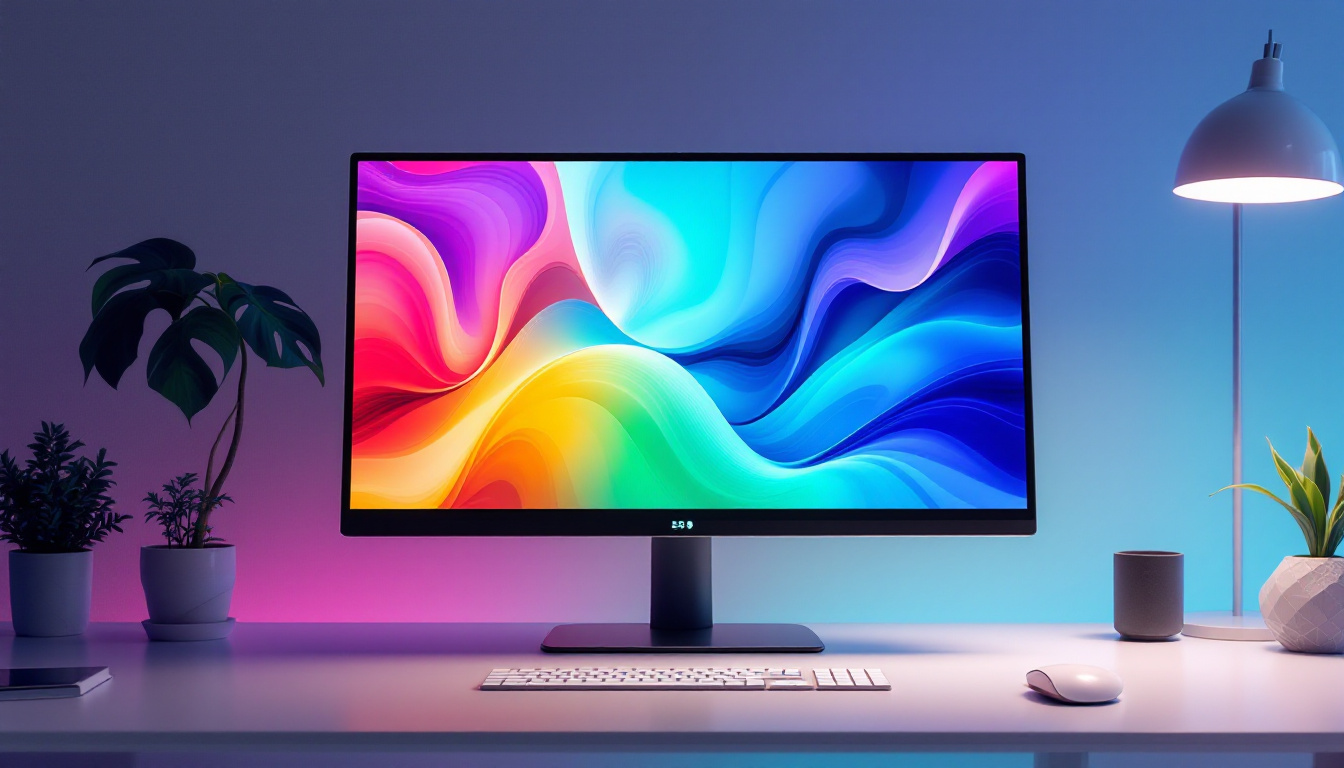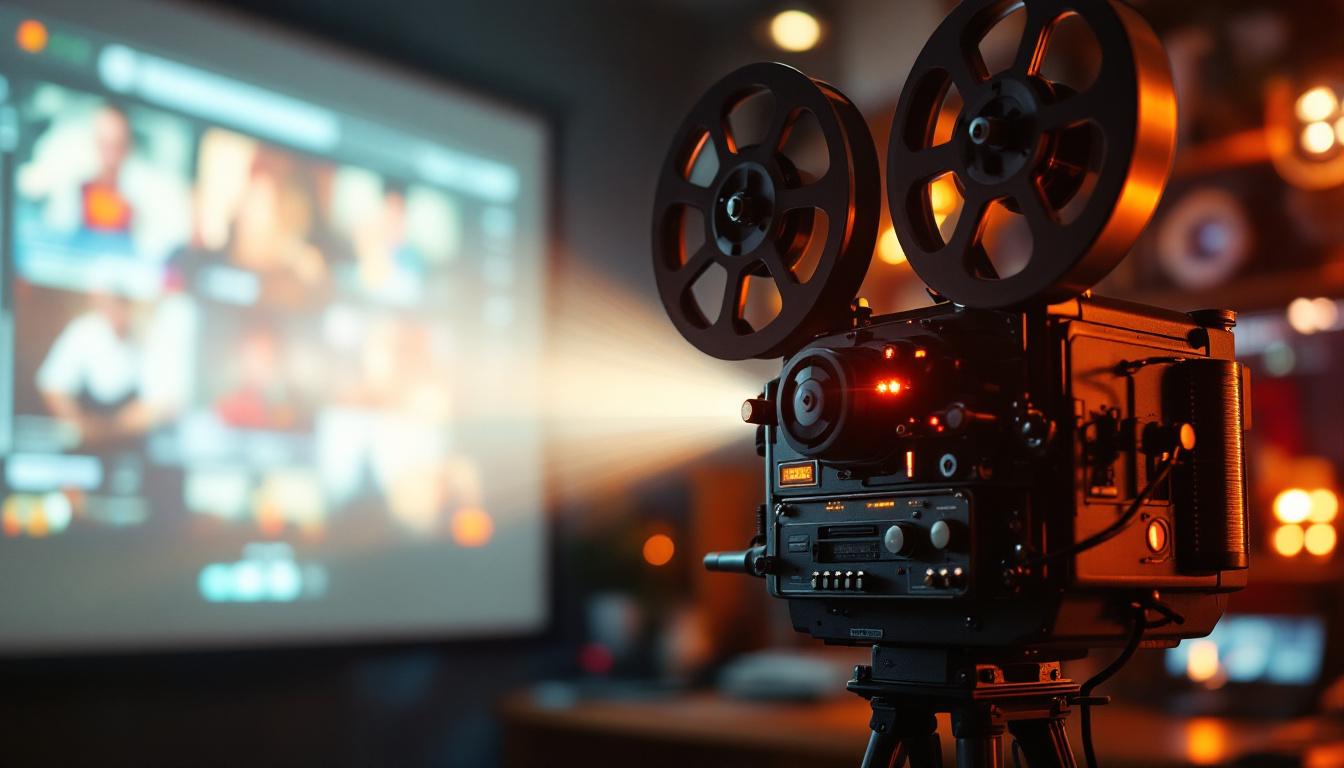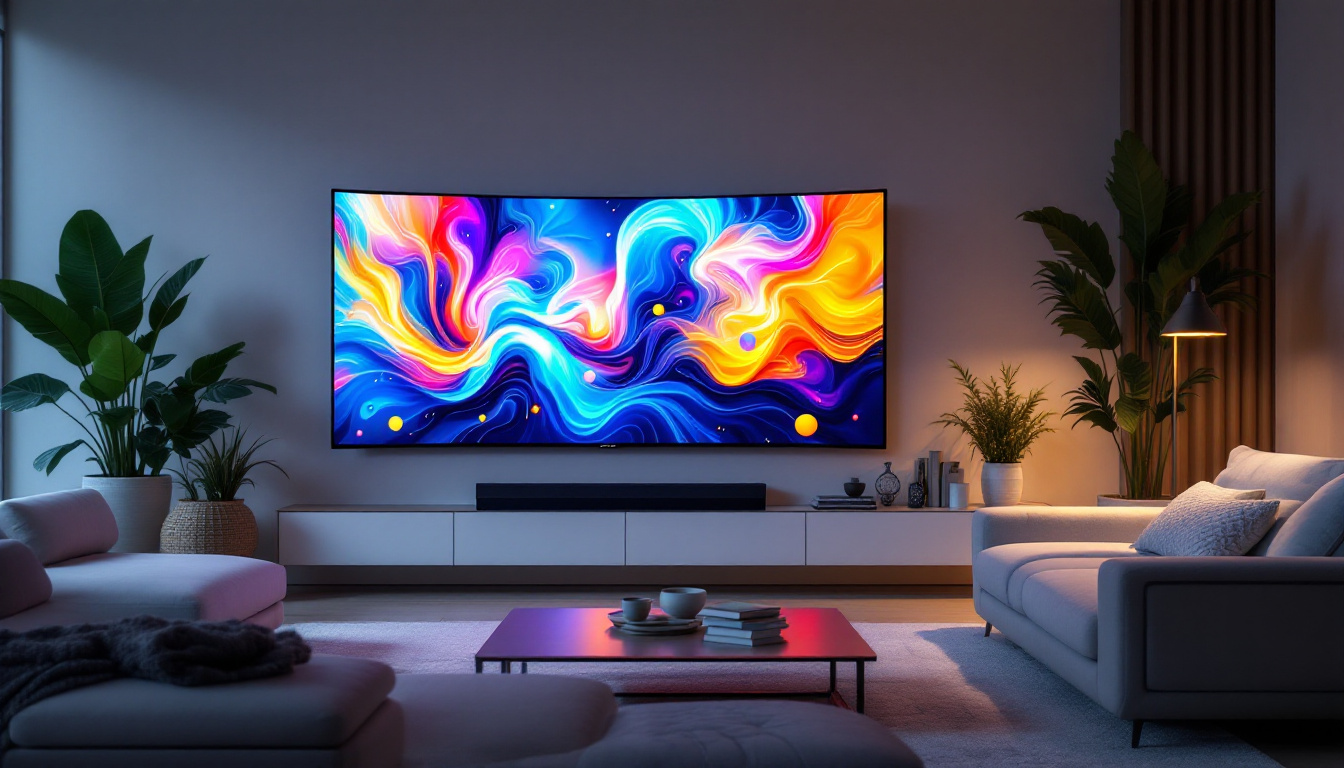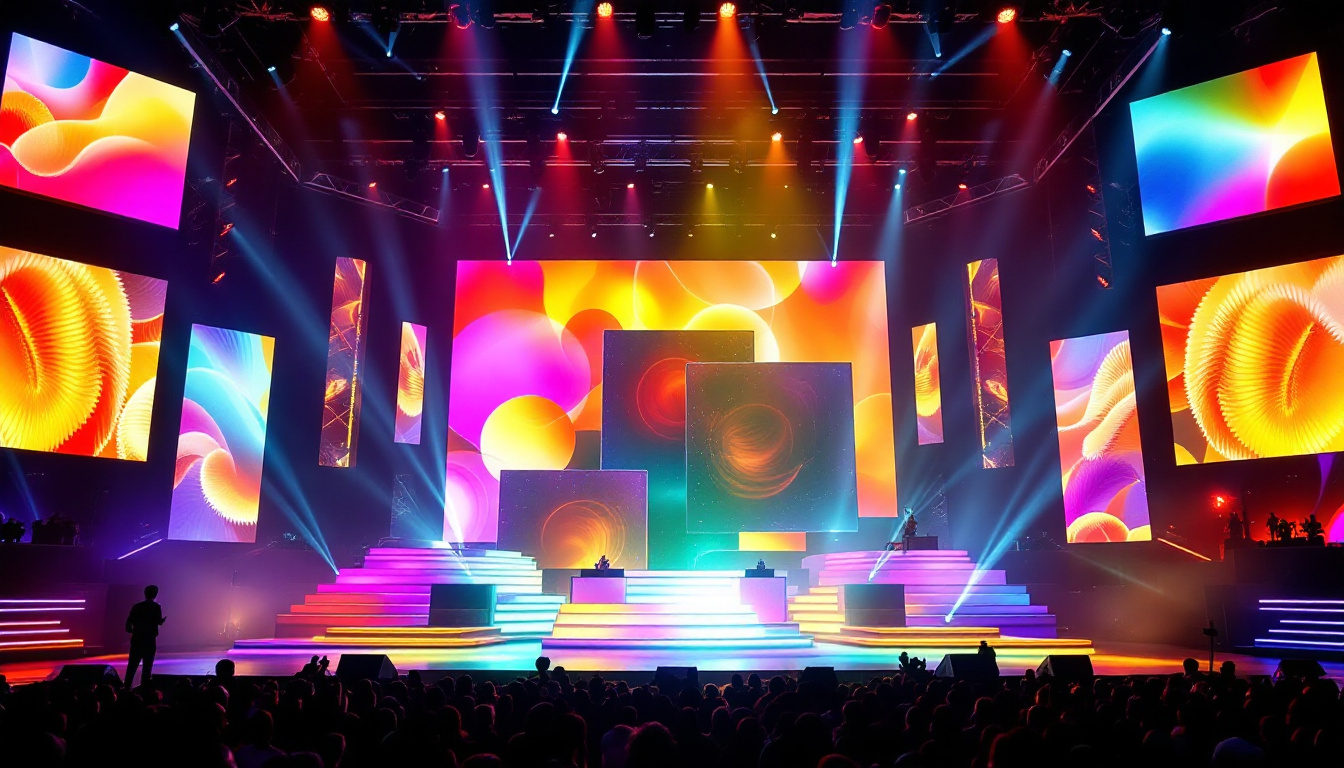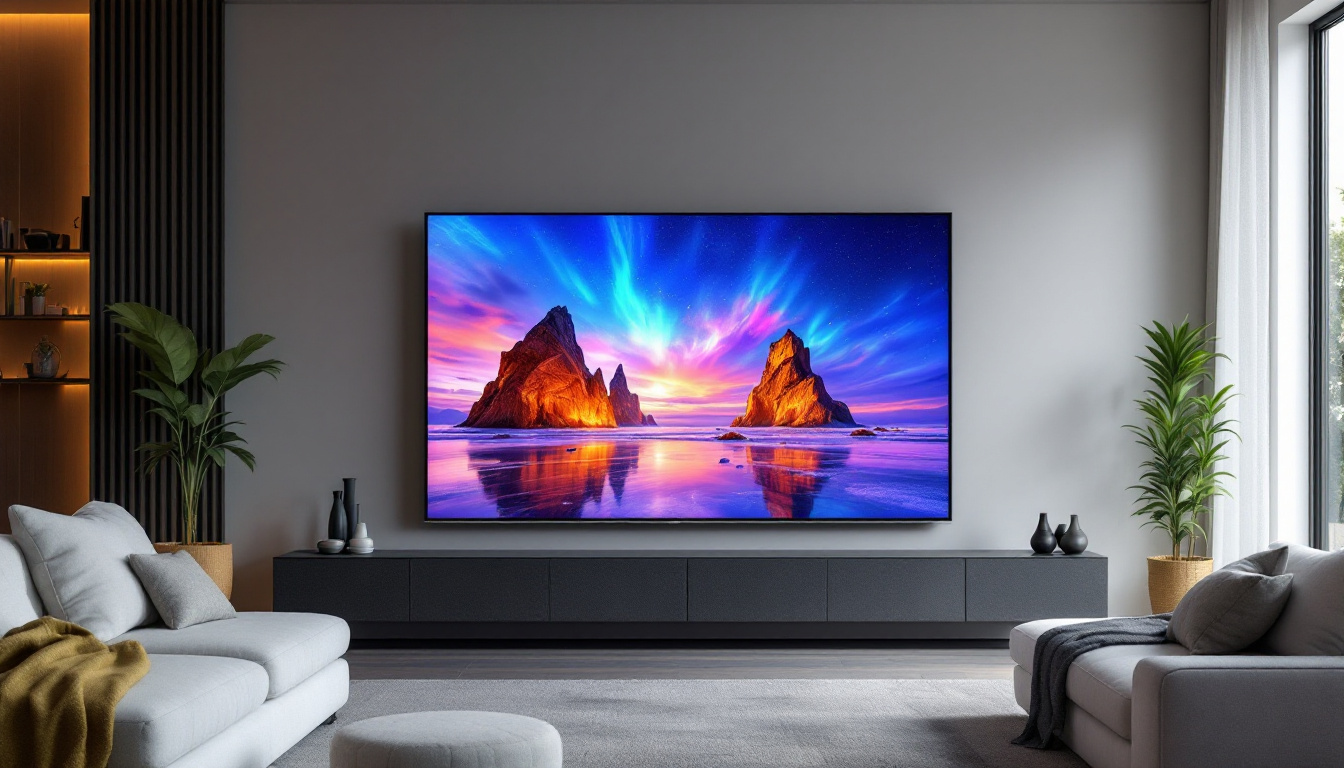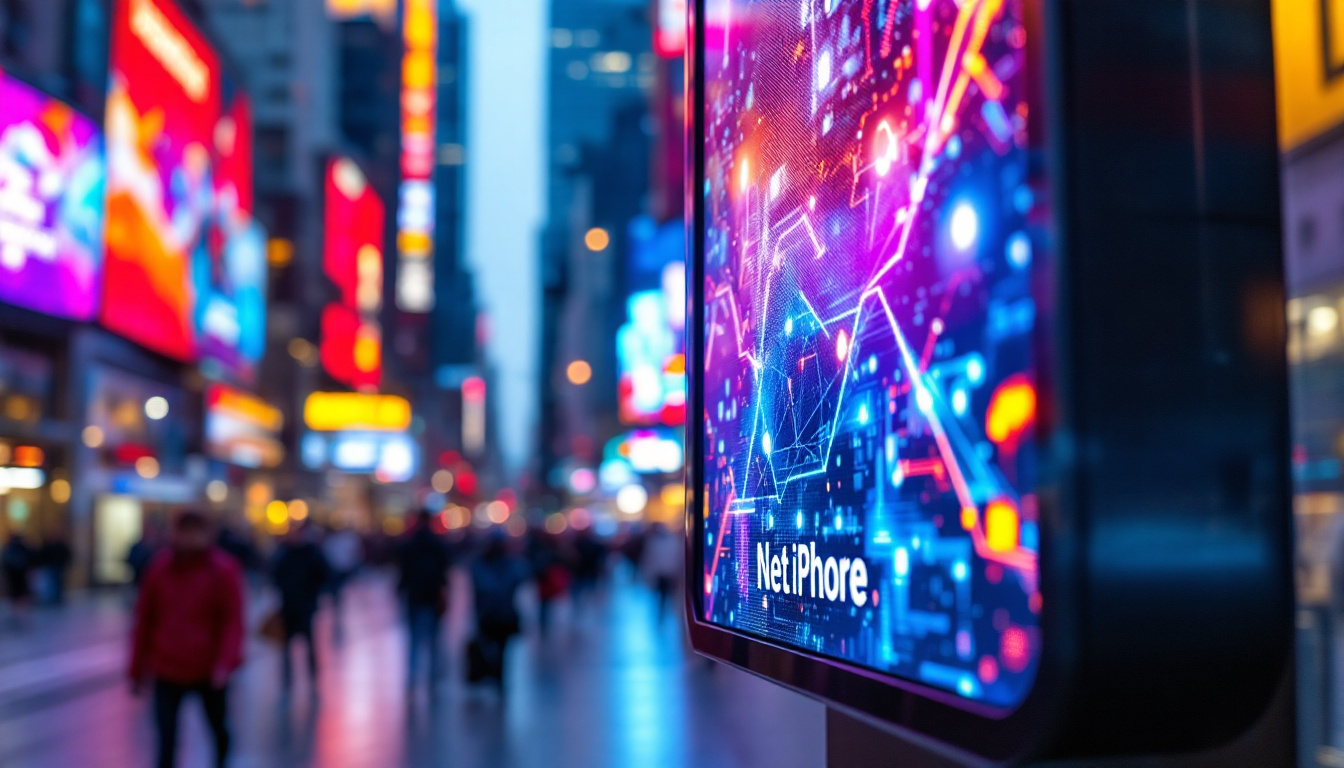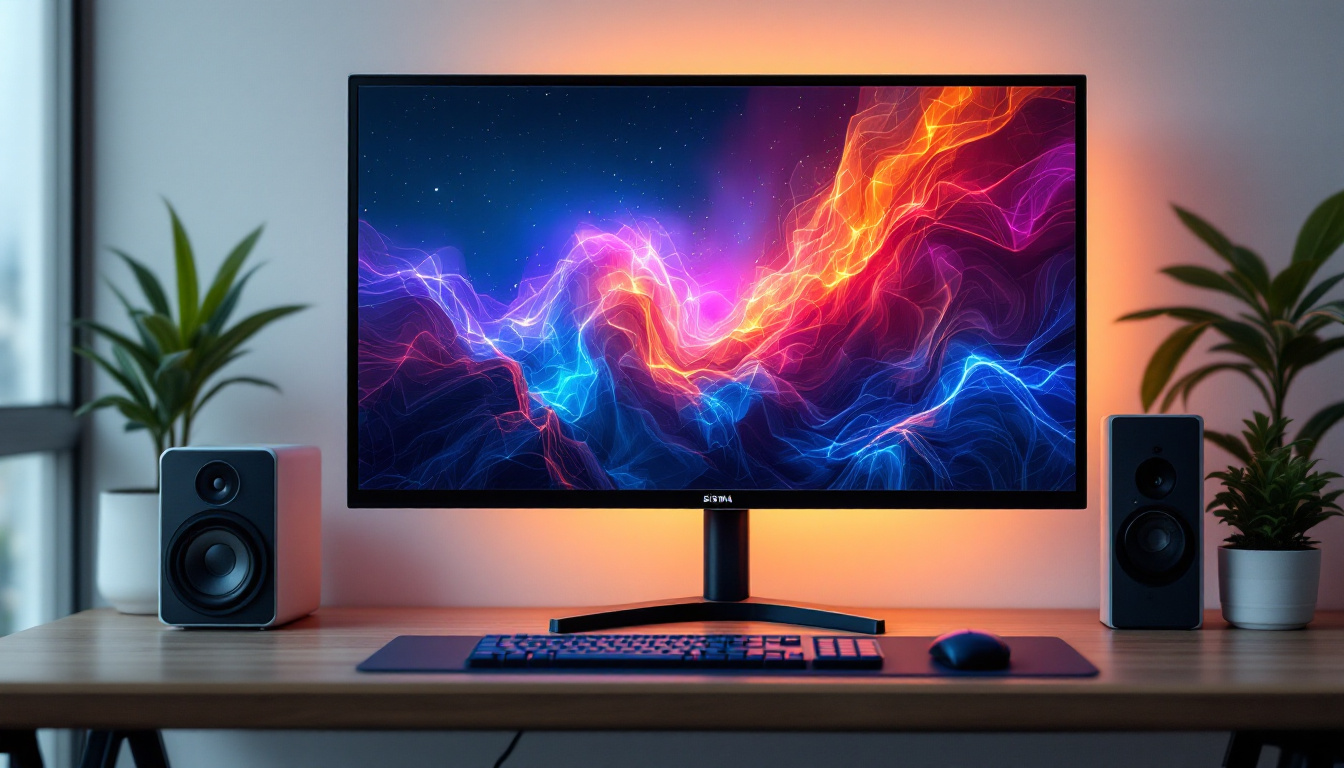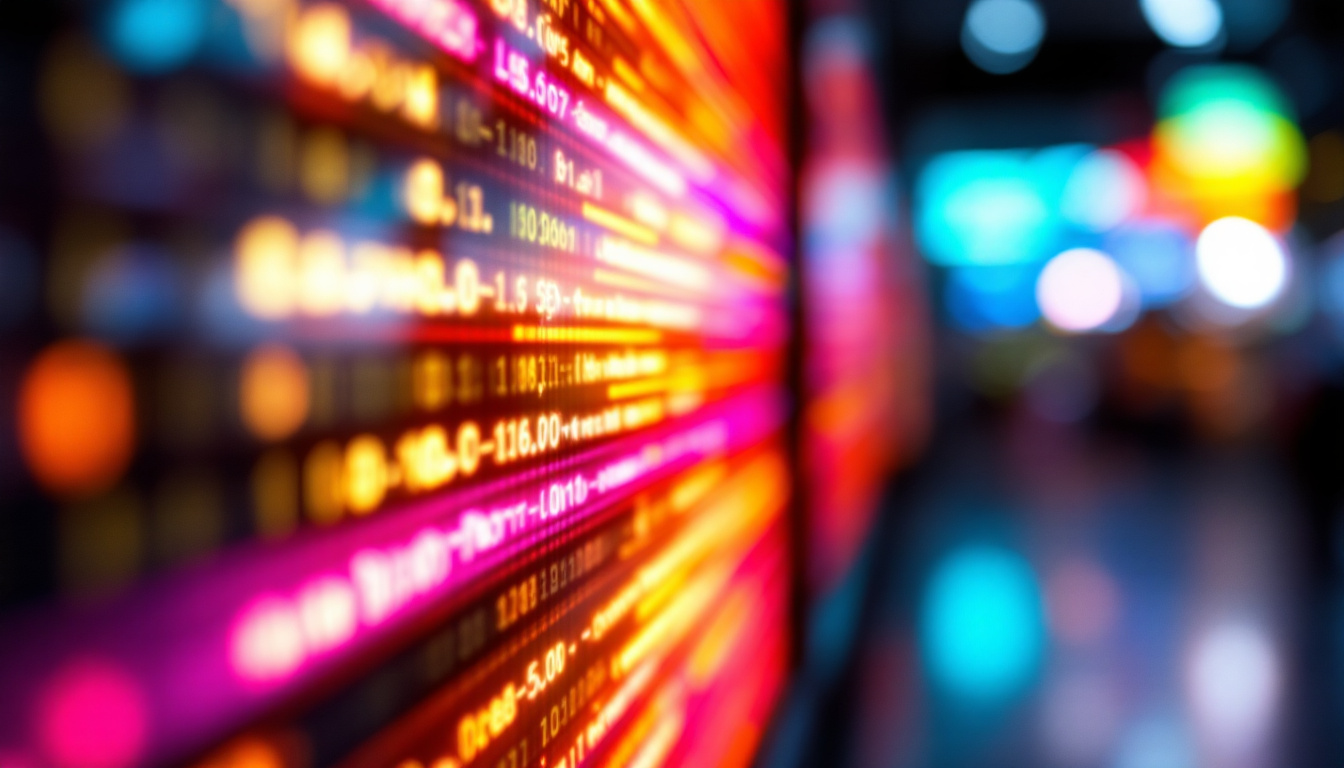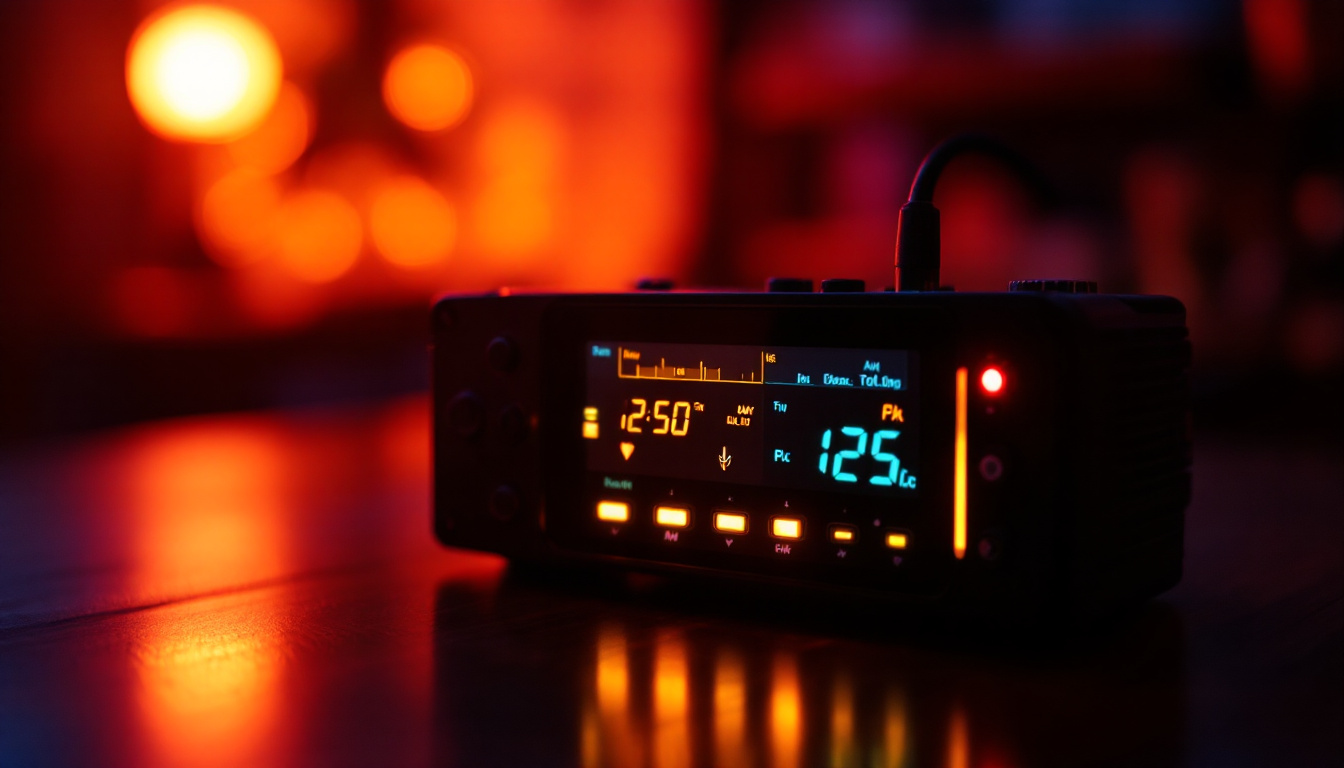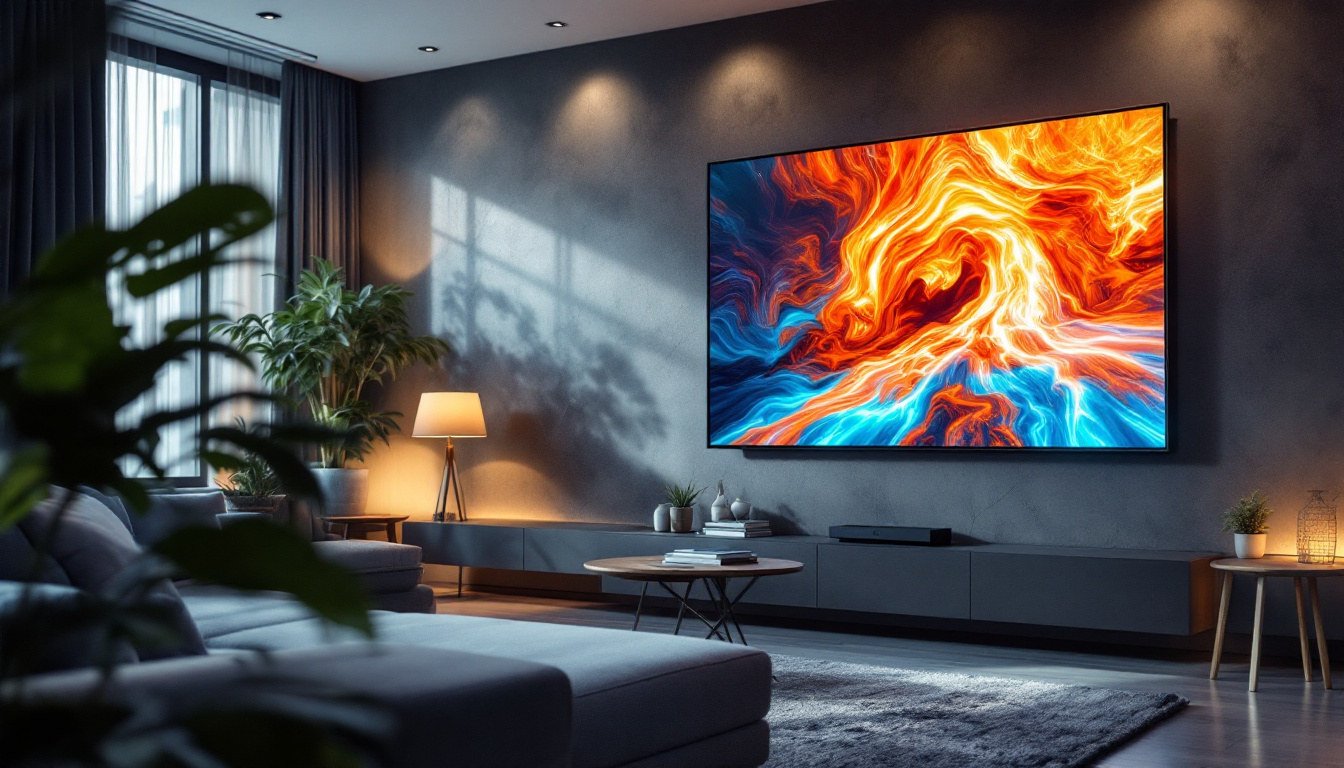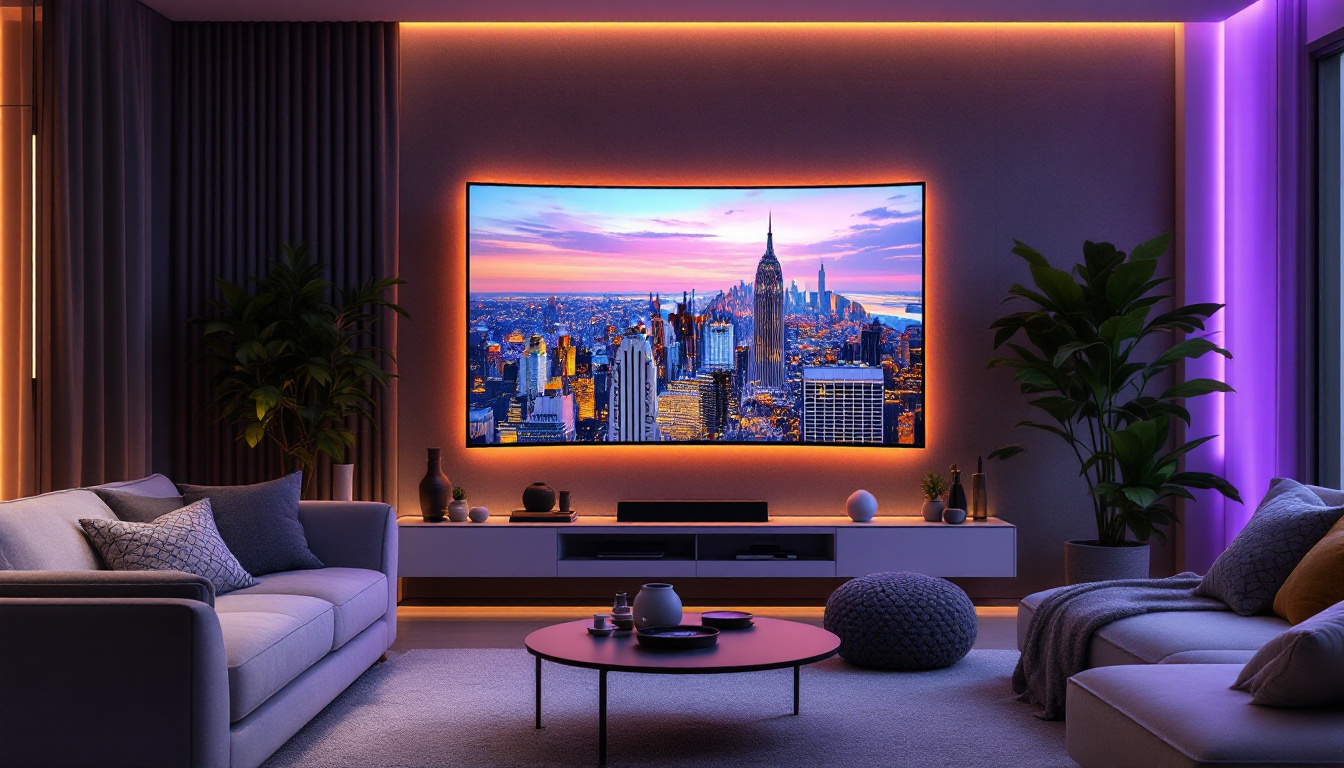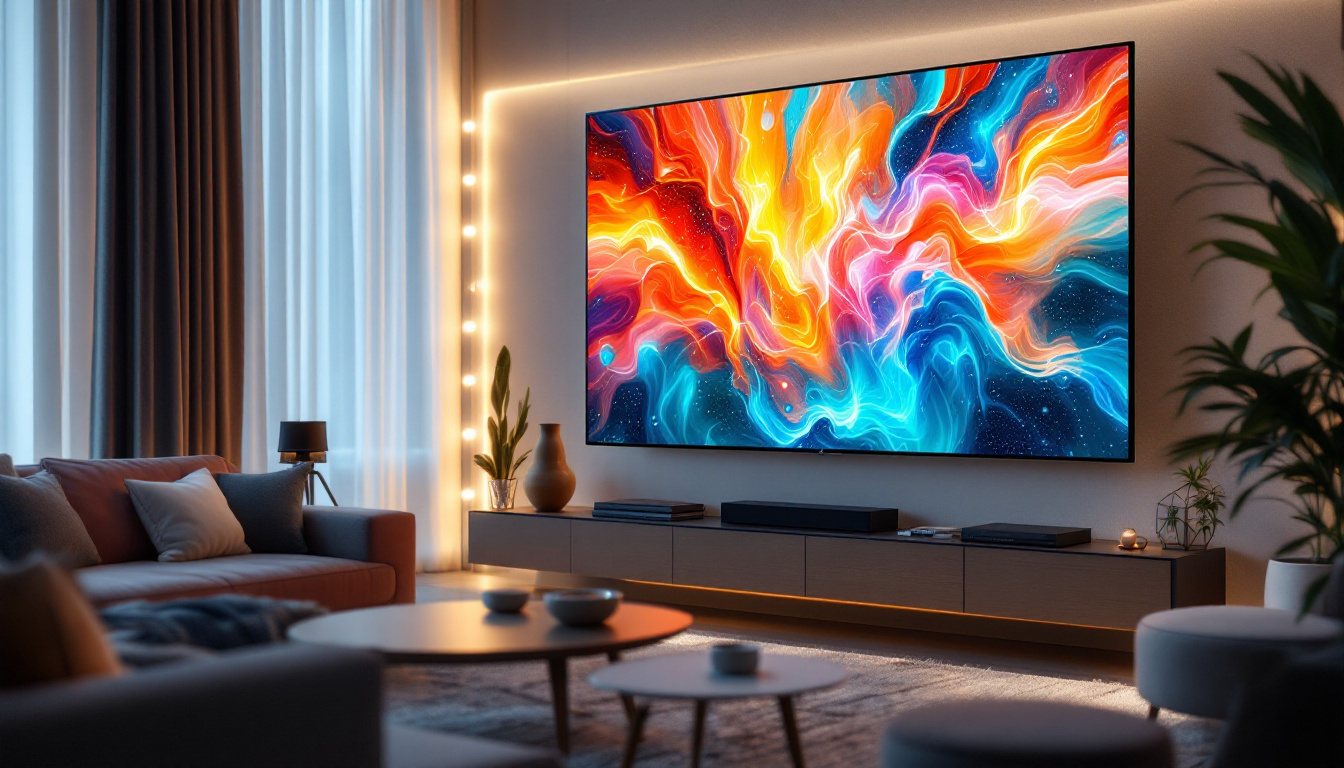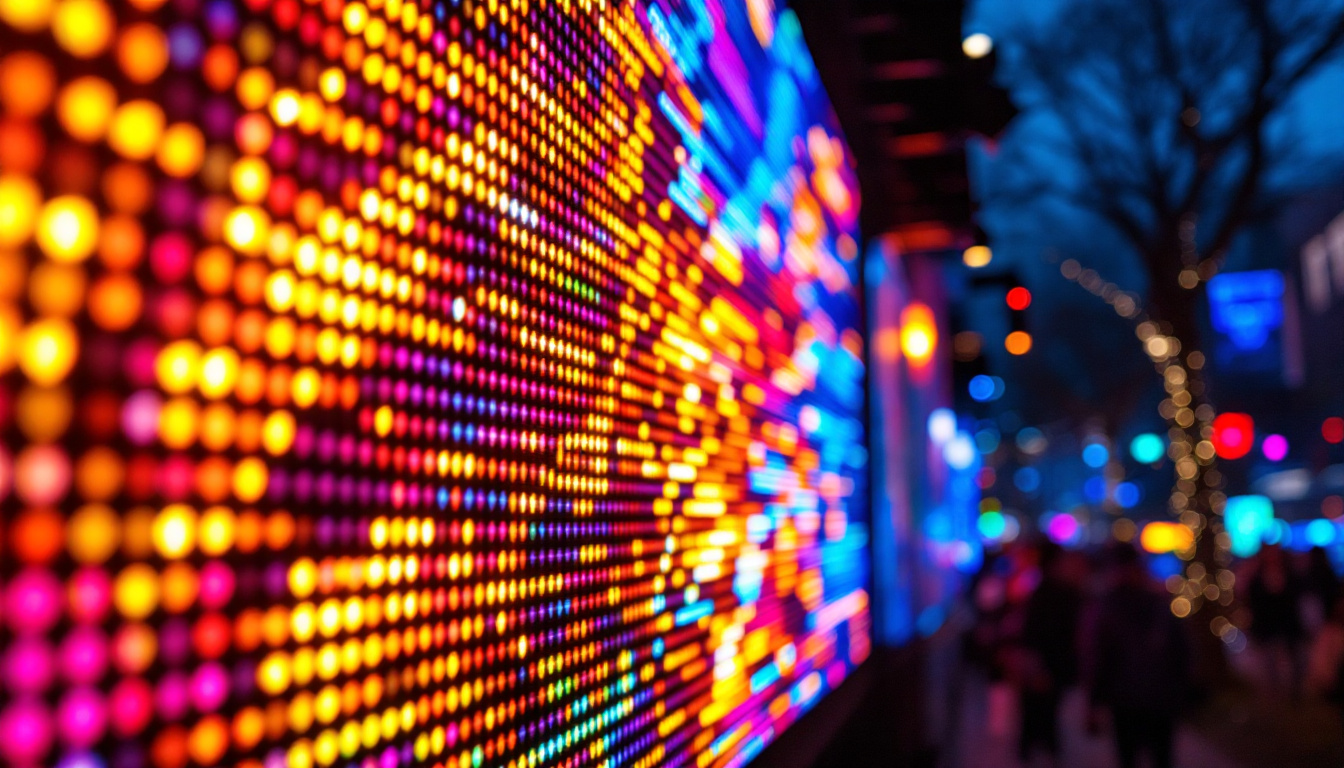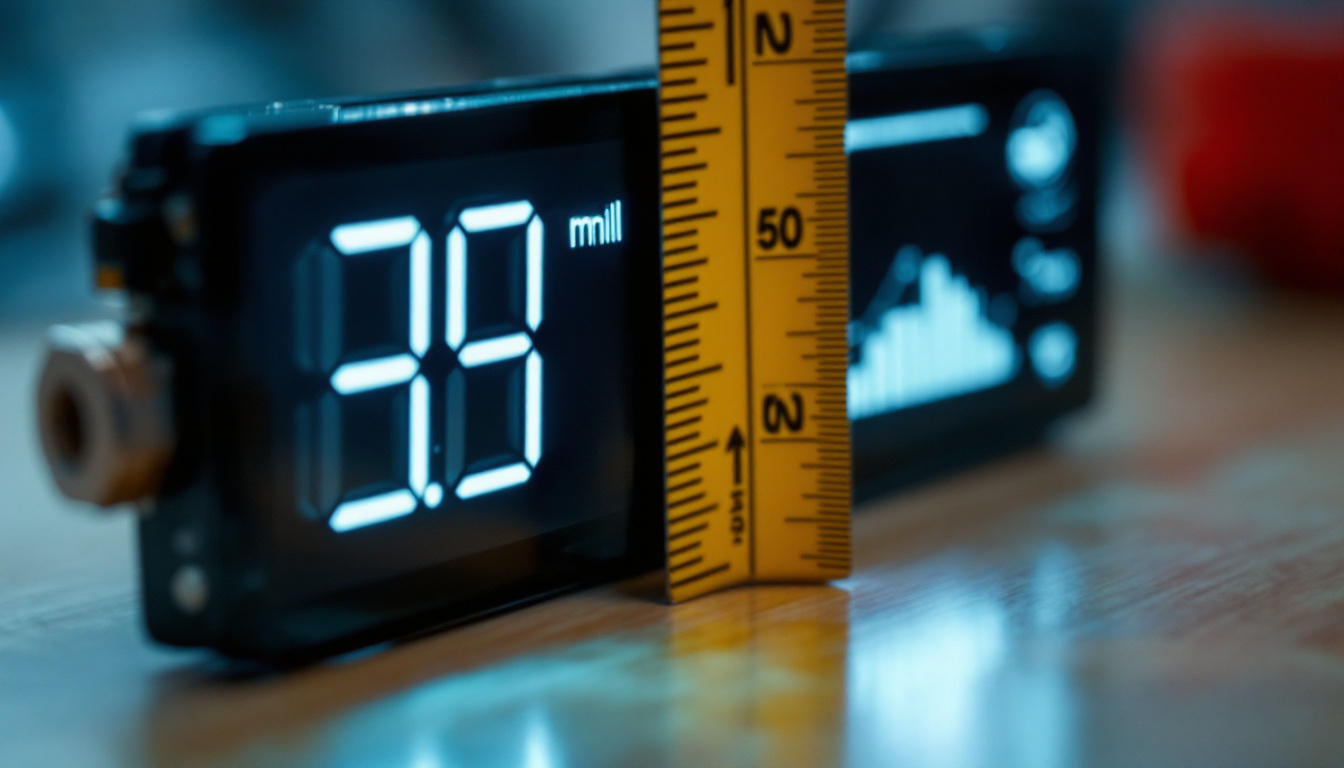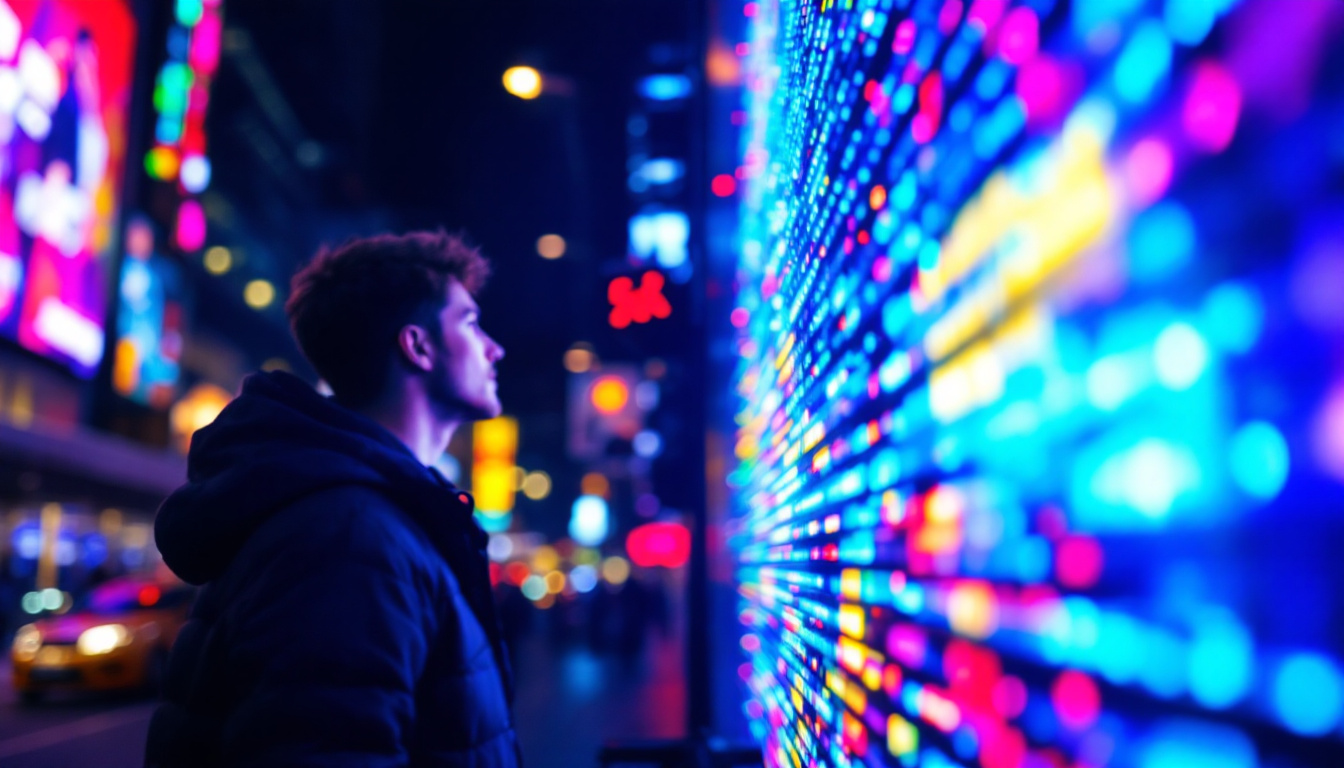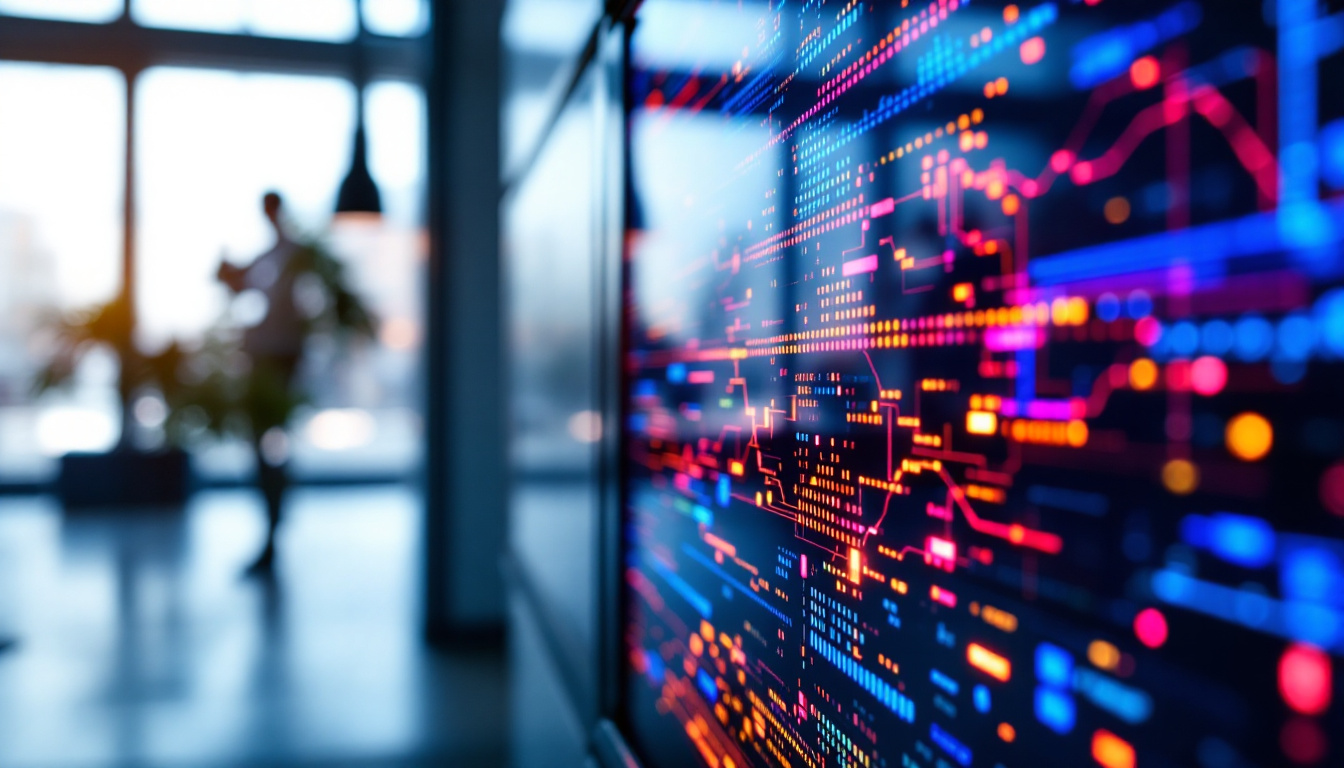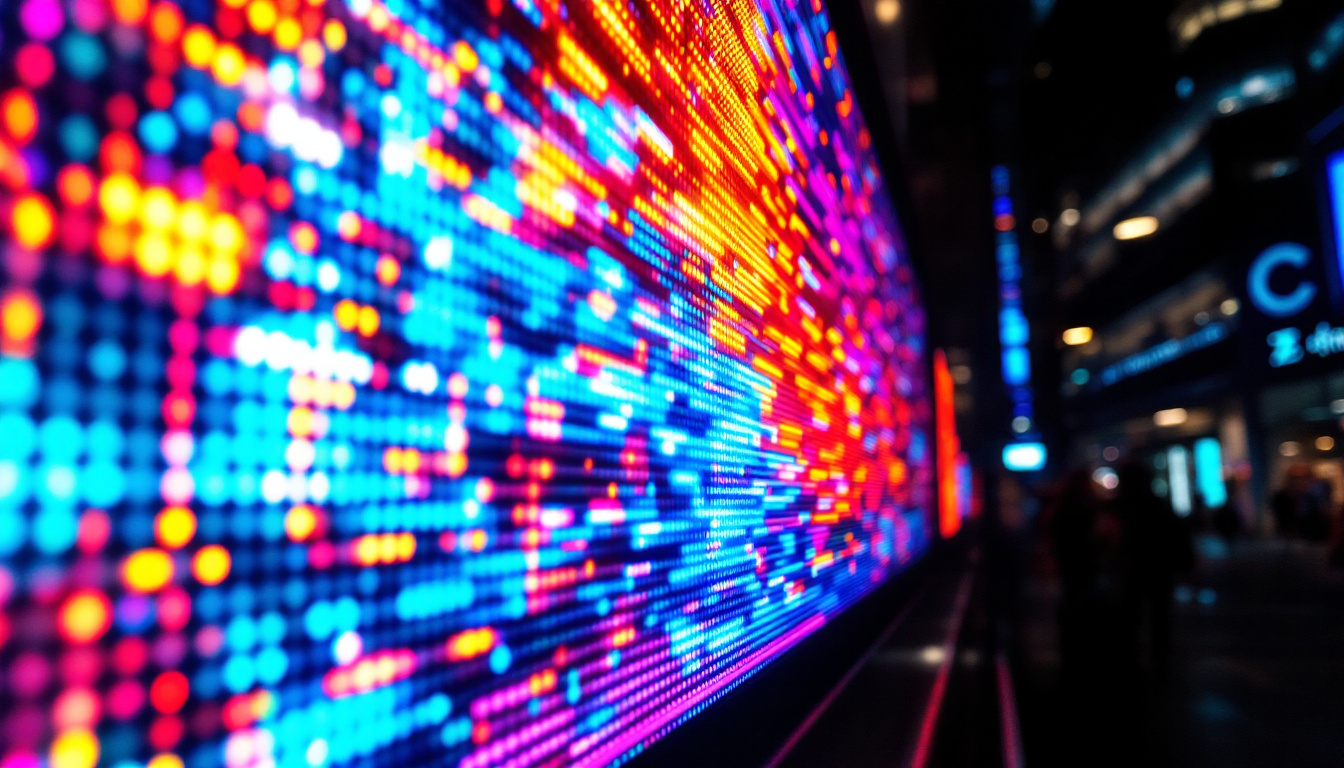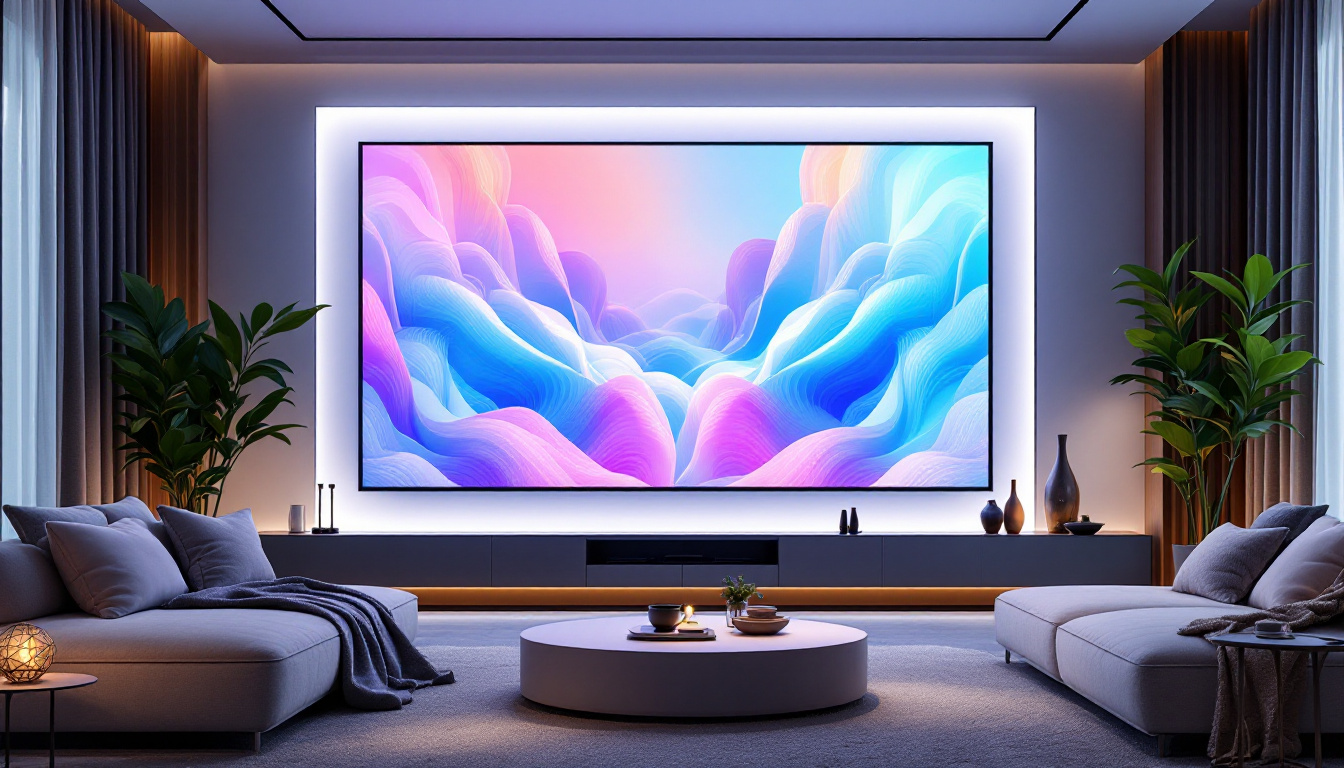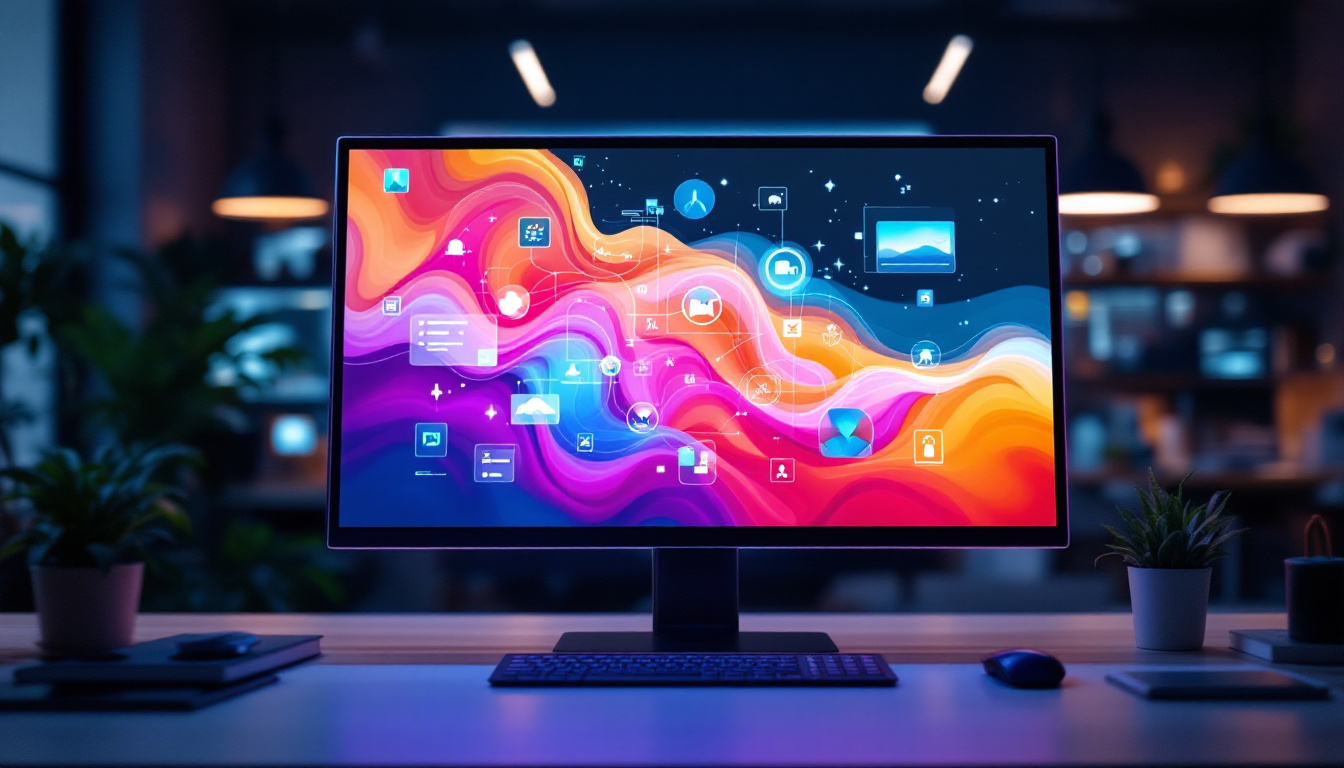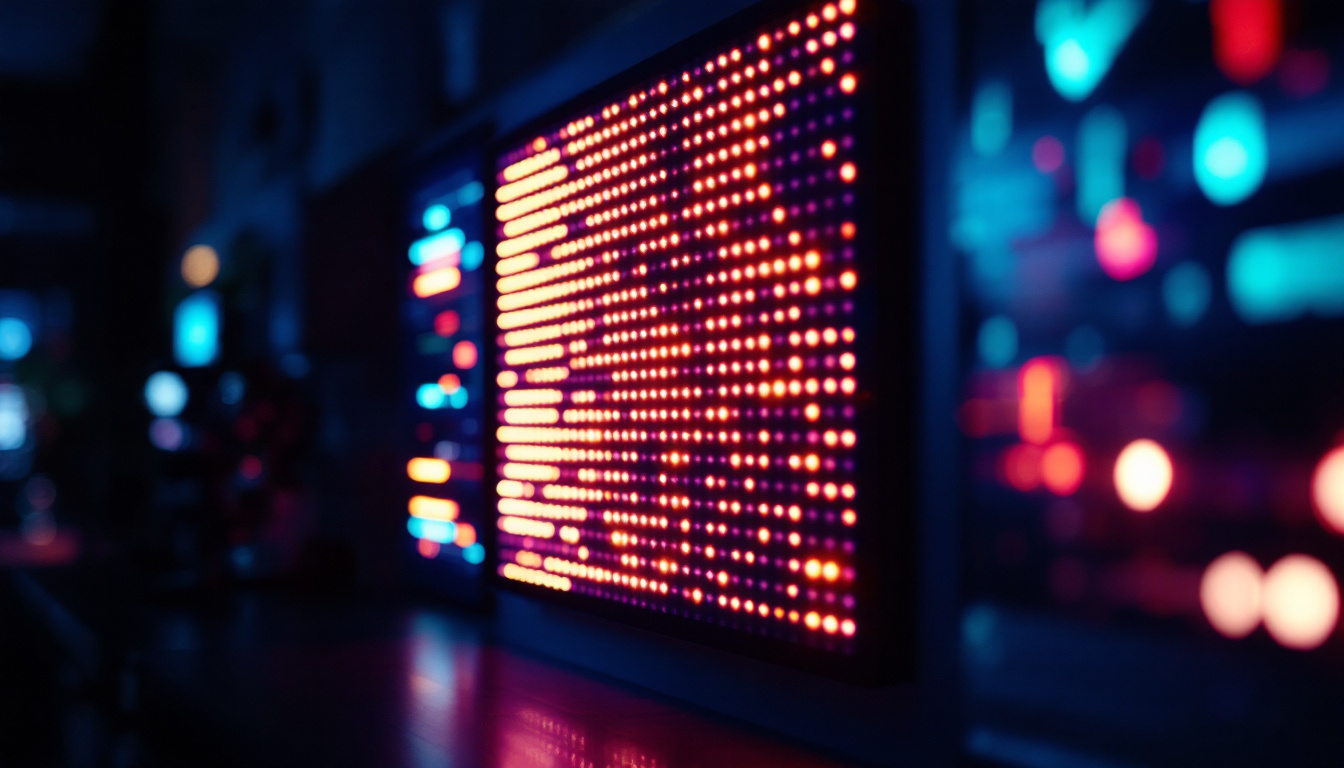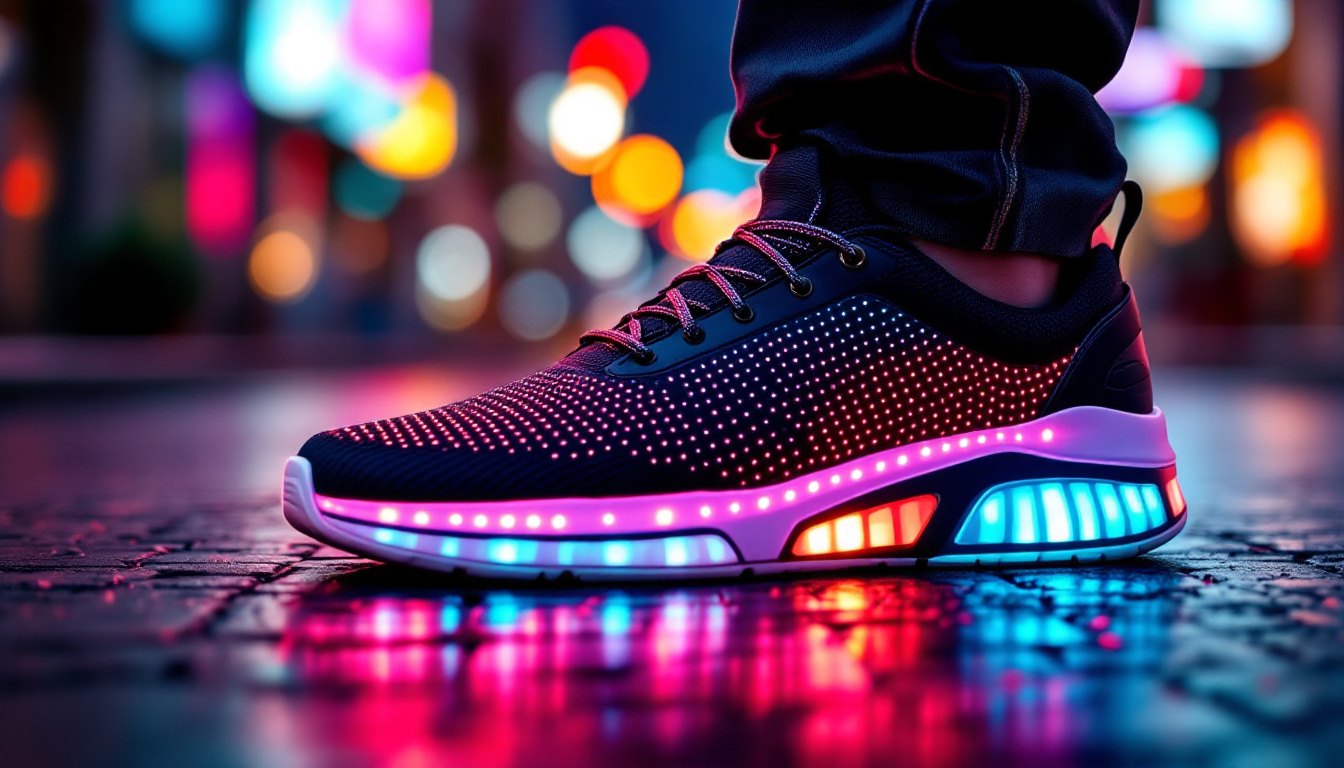In an age where technology is evolving at an unprecedented pace, large touch screen monitors have emerged as powerful tools for both personal and professional use. These devices, equipped with LED display technology, offer a unique blend of interactivity and visual clarity that enhances user experience across various applications. This article delves into the intricacies of large touch screen monitors, exploring their features, benefits, and the underlying LED technology that powers them.
Understanding Large Touch Screen Monitors
Large touch screen monitors combine the functionality of traditional displays with touch-sensitive technology, allowing users to interact directly with what is displayed on the screen. These monitors are widely used in various settings, including educational institutions, corporate environments, and public spaces, owing to their versatility and ease of use.
Key Features of Large Touch Screen Monitors
One of the standout features of large touch screen monitors is their size. Typically ranging from 32 inches to over 100 inches, these displays provide ample screen real estate for presentations, collaborative work, and interactive learning. The larger the screen, the more engaging the content becomes, making it easier for multiple users to view and interact simultaneously.
Another critical feature is the multi-touch capability. Most modern large touch screen monitors support multi-touch gestures, allowing several users to interact with the screen at once. This functionality is particularly beneficial in collaborative settings, where brainstorming and group activities are common.
Applications of Large Touch Screen Monitors
The versatility of large touch screen monitors makes them suitable for a wide range of applications. In educational settings, they serve as interactive whiteboards, enabling teachers to present lessons in an engaging manner. Students can participate actively by touching the screen to answer questions, manipulate digital content, or collaborate on projects.
In corporate environments, these monitors facilitate presentations and meetings. They can be used to display data, share documents, and even conduct video conferences, all while allowing participants to interact with the content. This interactivity can lead to more productive discussions and better retention of information.
The Technology Behind LED Displays
At the heart of large touch screen monitors lies LED display technology. LED, or Light Emitting Diode, is a semiconductor device that emits light when an electric current passes through it. This technology has revolutionized the display industry, offering numerous advantages over traditional LCD and plasma displays.
Advantages of LED Technology
One of the primary advantages of LED displays is their superior brightness and color accuracy. LED monitors can produce vibrant colors and deep blacks, enhancing the overall visual experience. This is particularly important in environments where lighting conditions can vary, as LED displays maintain clarity and color fidelity even in bright settings.
Energy efficiency is another significant benefit of LED technology. Compared to traditional display technologies, LED monitors consume less power, making them more environmentally friendly and cost-effective in the long run. This energy efficiency is particularly advantageous for large installations where multiple monitors are used simultaneously.
Types of LED Displays
There are several types of LED displays, each catering to different needs and preferences. The most common types include Direct View LED (DVLED) and LED-backlit LCD displays. DVLED displays consist of individual LED modules that can be arranged to create large screens, while LED-backlit LCD displays use LEDs to illuminate an LCD panel.
Direct View LED displays are often favored for their ability to create seamless, large-scale visuals without bezels, making them ideal for digital signage and large venues. On the other hand, LED-backlit LCD displays are more commonly used in consumer electronics and office environments due to their affordability and availability in various sizes.
Benefits of Using Large Touch Screen Monitors
The integration of large touch screen monitors into various settings offers numerous benefits that enhance user experience and engagement. From improved collaboration to increased accessibility, these devices are transforming how individuals interact with technology.
Enhanced Collaboration
One of the most significant advantages of large touch screen monitors is their ability to foster collaboration. In educational settings, teachers can engage students in interactive lessons, while in corporate environments, teams can brainstorm ideas and work on projects together in real-time. The ability to manipulate content directly on the screen encourages participation and creativity.
Moreover, the multi-user capability allows for simultaneous input from multiple participants, making it easier to gather feedback and ideas. This collaborative approach not only enhances productivity but also creates a more inclusive environment where everyone’s input is valued.
Improved Accessibility
Large touch screen monitors also improve accessibility for individuals with varying abilities. The touch interface allows for intuitive navigation, making it easier for users who may struggle with traditional input devices like keyboards and mice. Features such as voice recognition and screen magnification can further enhance accessibility, ensuring that everyone can participate fully.
In public spaces, large touch screen monitors can provide information and services to a diverse audience, including tourists and individuals with disabilities. This inclusivity is essential in creating environments that cater to all users, promoting equal access to information and resources.
Considerations When Choosing a Large Touch Screen Monitor
When selecting a large touch screen monitor, several factors should be considered to ensure the best fit for specific needs. Understanding these considerations can help organizations make informed decisions that align with their objectives.
Screen Size and Resolution
The size and resolution of the monitor are critical factors that can significantly impact user experience. A larger screen size is generally more effective for group settings, allowing multiple users to view content comfortably. However, the resolution should also be considered; higher resolutions, such as 4K, provide sharper images and finer detail, enhancing clarity and engagement.
Organizations should assess their space and audience size to determine the appropriate screen size and resolution. For instance, a large conference room may benefit from a bigger screen with high resolution, while a classroom setting might require a smaller size with adequate resolution for close viewing.
Touch Technology
Different touch technologies are available, including capacitive, resistive, and infrared touch screens. Capacitive touch screens are known for their responsiveness and accuracy, making them ideal for interactive applications. Resistive screens, while generally less expensive, may not offer the same level of precision and multi-touch capabilities.
Choosing the right touch technology is essential for ensuring that the monitor meets the specific needs of its intended use. For environments that require frequent interaction, capacitive touch screens are often the preferred choice.
Installation and Maintenance of Large Touch Screen Monitors
Proper installation and maintenance of large touch screen monitors are crucial for maximizing their lifespan and performance. Understanding the best practices for installation and ongoing care can help organizations avoid common pitfalls and ensure optimal functionality.
Installation Best Practices
When installing large touch screen monitors, it is essential to consider the placement and mounting options. The monitor should be positioned at a comfortable height for users, allowing for easy interaction without straining. Wall mounts, stands, or mobile carts can be used depending on the environment and intended use.
Additionally, ensuring adequate power supply and connectivity is vital. Monitors should be connected to reliable power sources, and any necessary cables should be neatly organized to prevent tripping hazards. Proper cable management not only enhances safety but also contributes to a clean and professional appearance.
Regular Maintenance and Care
To keep large touch screen monitors functioning optimally, regular maintenance is essential. This includes routine cleaning of the screen surface to remove fingerprints and smudges. Using appropriate cleaning solutions and microfiber cloths can prevent damage to the screen while ensuring clarity.
Furthermore, software updates should be regularly checked and installed to enhance functionality and security. Keeping the monitor’s software up to date ensures that it operates smoothly and remains compatible with various applications and devices.
Future Trends in Large Touch Screen Monitors
The future of large touch screen monitors is promising, with advancements in technology paving the way for even more innovative features and applications. As industries continue to evolve, these devices are likely to become more integrated into everyday life.
Integration with Smart Technologies
One of the most significant trends is the integration of large touch screen monitors with smart technologies. This includes compatibility with smart devices, cloud services, and artificial intelligence. Such integration allows for seamless connectivity and enhanced functionality, enabling users to access information and applications effortlessly.
For instance, large touch screen monitors can be connected to smart home systems, allowing users to control various devices directly from the screen. This interconnectivity enhances user experience and convenience, making technology more accessible and intuitive.
Advancements in Display Technology
As display technology continues to advance, large touch screen monitors are expected to feature even higher resolutions, improved color accuracy, and enhanced energy efficiency. Innovations such as OLED (Organic Light Emitting Diode) displays may become more prevalent, offering superior image quality and flexibility in design.
Additionally, advancements in touch technology, such as haptic feedback and gesture recognition, may further enhance user interaction. These developments will likely lead to more immersive experiences, transforming how users engage with content on large touch screens.
Conclusion
Large touch screen monitors equipped with LED display technology represent a significant advancement in how individuals and organizations interact with digital content. Their versatility, interactivity, and superior visual quality make them invaluable tools in various settings, from classrooms to corporate boardrooms.
As technology continues to evolve, the future of large touch screen monitors looks bright, with exciting innovations on the horizon. By understanding their features, benefits, and the underlying technology, organizations can make informed decisions that enhance collaboration, accessibility, and overall user experience.
Discover LumenMatrix’s Innovative LED Solutions
Ready to elevate your interactive experiences with the latest in LED display technology? Look no further than LumenMatrix, a pioneer in crafting immersive visual solutions that bring your content to life. From dynamic Indoor and Outdoor LED Wall Displays to specialized solutions like Vehicle and Sports LED Displays, LumenMatrix offers a wide array of products designed to captivate and engage. Embrace the future of digital signage with our Custom, All-in-One, and Transparent LED Displays, each tailored to meet your unique communication needs. Check out LumenMatrix LED Display Solutions today and transform your space into a hub of innovation and interaction.

